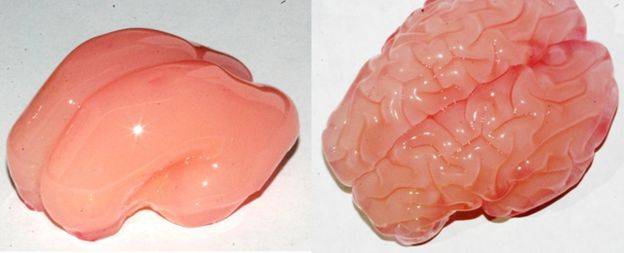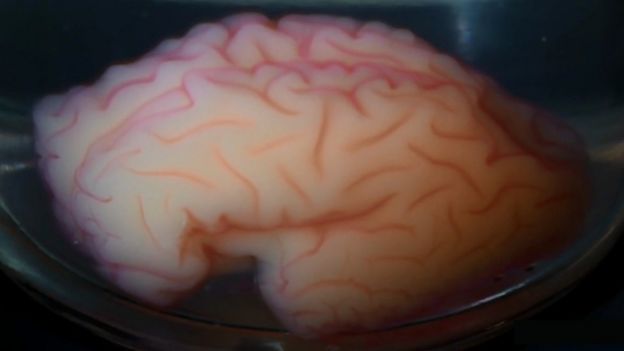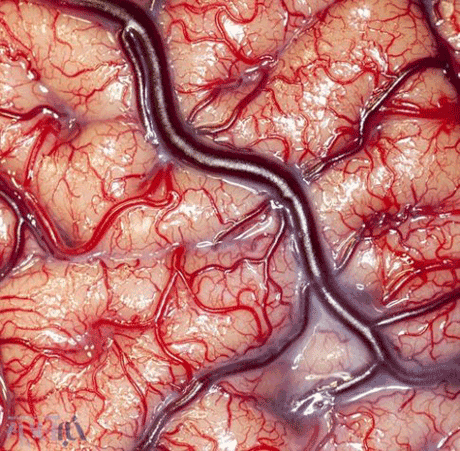Navigation
Install the app
How to install the app on iOS
Follow along with the video below to see how to install our site as a web app on your home screen.
Note: This feature may not be available in some browsers.
More options
You are using an out of date browser. It may not display this or other websites correctly.
You should upgrade or use an alternative browser.
You should upgrade or use an alternative browser.
our ugly brain
- Thread starter dani67
- Start date
Moonglow
Diamond Member
You are hardly in a place to discriminate..
- Thread starter
- #3
what?!!You are hardly in a place to discriminate..
waltky
Wise ol' monkey
Brain wrinkles replicated in a jar...
Physics of brain wrinkles copied in a jar
Mon, 01 Feb 2016 - Scientists have reproduced the wrinkled shape of a human brain using a simple gel model with two layers. They made a solid replica of a foetal brain, still smooth and unfolded, and coated it with a second layer which expanded when dunked into a solvent.
Physics of brain wrinkles copied in a jar
Mon, 01 Feb 2016 - Scientists have reproduced the wrinkled shape of a human brain using a simple gel model with two layers. They made a solid replica of a foetal brain, still smooth and unfolded, and coated it with a second layer which expanded when dunked into a solvent.
That expansion produced a network of furrows that was remarkably similar to the pattern seen in a real human brain. This suggests that brain folds are caused by physics: the outer part grows faster than the rest, and crumples. Such straightforward, mechanical buckling is one of several proposed explanations for the distinctive twists and turns of the brain's outermost blanket of cells, called the "cortex".

The gel model started out smooth, like the brain of a 22-week-old foetus, and ended up with a pattern of folds similar to that of a brain at 34 weeks
Alternatively, researchers have suggested that biochemical signals might trigger expansion and contraction in particular parts of the sheet, or that the folds arise because of stronger connections between specific areas. "There have been several hypotheses, but the challenge has been that they are difficult to test experimentally," said Tuomas Tallinen, a soft matter physicist at the University of Jyväskylä in Finland and a co-author of the study, which appears in Nature Physics. "I think it's very significant... that we can actually recreate the folding process using this quite simple, physical model."

Surprisingly like the real thing: The finished, folded "gel brain"
Humans are one of just a few animals - among them whales, pigs and some other primates - that possess these iconic undulations. In other creatures, and early in development, the cortex is smooth. The replica in the study was based on an MRI brain scan from a 22-week-old foetus - the stage just before folds usually appear. A 3D printout of that scan was used to make a mould, which in turn was filled with a silicon-based gel to make the "gel brain". Finally, a 1mm-thick layer of slightly different gel was added to the surface - to play the role of the cortex.
Distinctive grooves
Similar threads
- Replies
- 22
- Views
- 216
- Replies
- 5
- Views
- 147
Latest Discussions
- Replies
- 14
- Views
- 73
- Replies
- 9
- Views
- 37
Forum List
-
-
-
-
-
Political Satire 8866
-
-
-
-
-
-
-
-
-
-
-
-
-
-
-
-
-
-
-
ObamaCare 781
-
-
-
-
-
-
-
-
-
-
-
Member Usernotes 492
-
-
-
-
-
-
-
-
-
-
